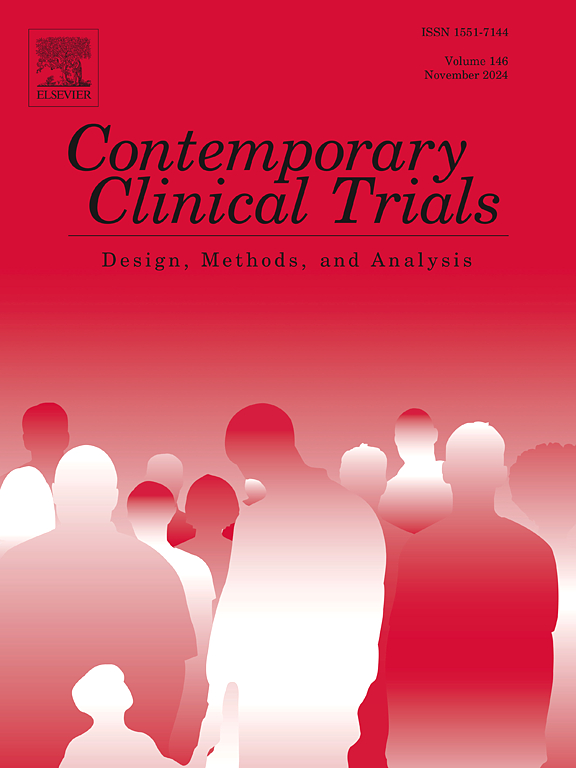Strategies to evaluate treatment effects in clinical trials for emerging infectious diseases
IF 1.9
3区 医学
Q3 MEDICINE, RESEARCH & EXPERIMENTAL
引用次数: 0
Abstract
Background
Swift regulatory approval of therapeutic interventions is crucial during emerging infectious disease outbreaks. However, variability in treatment effects based on disease severity or subgroups complicates trial design and endpoint selection. Prioritized composite endpoints can capture treatment effects across diverse clinical courses; however, their performance under heterogeneous treatment effects remains uncertain. This study uses simulation to evaluate trial design strategies in such contexts.
Methods
This study examines eight combinations of population and endpoint strategies to optimize trial design in emerging infectious diseases: evaluating treatment in the overall population and subgroups, with various endpoint choices including single, multiple, and prioritized composite endpoints. Simulated data was generated using multistate models based on the ACTT-1 study. Eight treatment effect scenarios, some exhibiting heterogeneity, were considered to evaluate ability to demonstrate efficacy.
Results
In scenarios without heterogeneous treatment effects, analyses in the overall population generally showed higher power than subgroup analyses. Time to recovery had relatively high power, while prioritized composite and multiple endpoints were comparable. In scenarios with treatment effect heterogeneity by baseline disease severity, power was higher in effective subgroups than in the overall population. Prioritized composite endpoints showed high power in scenarios where the treatment was effective on distinct endpoints in each subgroup.
Conclusions
For drug development in emerging infectious diseases with limited information, it is preferable to focus on evaluating prioritized composite or multiple endpoints in the overall population. Stratified analysis can be more powerful than unstratified analysis and should be considered for the primary analysis in the overall population.
评价新发传染病临床试验治疗效果的策略
背景:在新发传染病暴发期间,监管机构对治疗干预措施的迅速批准至关重要。然而,基于疾病严重程度或亚组的治疗效果的可变性使试验设计和终点选择复杂化。优先组合终点可以捕获不同临床过程的治疗效果;然而,它们在异质处理效果下的性能仍不确定。本研究使用模拟来评估在这种情况下的试验设计策略。方法:本研究考察了8种人群和终点策略组合,以优化新发传染病的试验设计:评估总体人群和亚组的治疗效果,包括单一、多个和优先组合终点。模拟数据采用基于ACTT-1研究的多状态模型生成。8种治疗效果方案,其中一些表现出异质性,被认为是评估证明疗效的能力。结果:在没有异质性治疗效果的情况下,对总体人群的分析通常显示出比亚组分析更高的功效。恢复时间具有相对较高的功率,而优先组合和多个端点具有可比性。在治疗效果根据基线疾病严重程度存在异质性的情况下,有效亚组的疗效高于总体人群。在治疗对每个亚组的不同终点有效的情况下,优先组合终点显示出较高的功效。结论:对于信息有限的新发传染病的药物开发,最好侧重于评估总体人群中优先的复合终点或多个终点。分层分析可能比非分层分析更有效,应考虑作为总体人群的主要分析。
本文章由计算机程序翻译,如有差异,请以英文原文为准。
求助全文
约1分钟内获得全文
求助全文
来源期刊
CiteScore
3.70
自引率
4.50%
发文量
281
审稿时长
44 days
期刊介绍:
Contemporary Clinical Trials is an international peer reviewed journal that publishes manuscripts pertaining to all aspects of clinical trials, including, but not limited to, design, conduct, analysis, regulation and ethics. Manuscripts submitted should appeal to a readership drawn from disciplines including medicine, biostatistics, epidemiology, computer science, management science, behavioural science, pharmaceutical science, and bioethics. Full-length papers and short communications not exceeding 1,500 words, as well as systemic reviews of clinical trials and methodologies will be published. Perspectives/commentaries on current issues and the impact of clinical trials on the practice of medicine and health policy are also welcome.

 求助内容:
求助内容: 应助结果提醒方式:
应助结果提醒方式:


